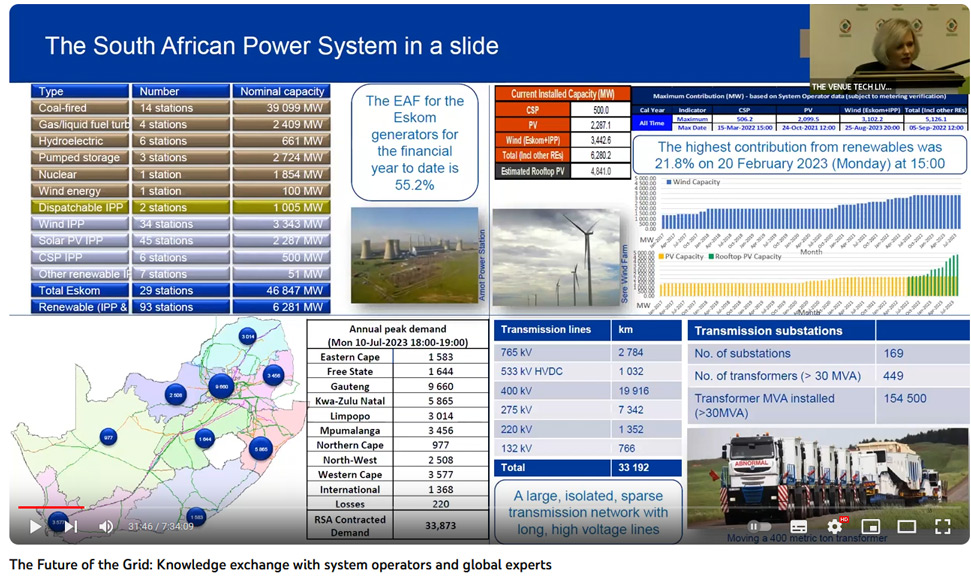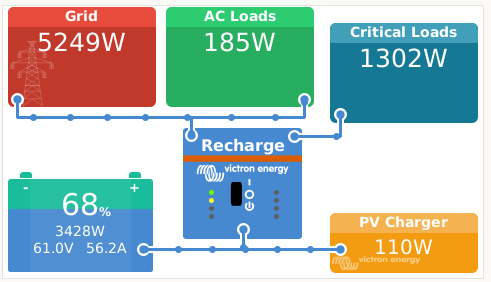Quote from that article …
In bold my suspicion of what is potting, causing the slippage … linked directly to a lack of skilled staff.
Quote from that article …
In bold my suspicion of what is potting, causing the slippage … linked directly to a lack of skilled staff.
The pessimist in me wants to believe that. The other half of me wants to know: 15% by number of listed items, or 15% of actual volume of work required.
It may well be true, it may also be the press picking the more outrageous number.
The thing that worries me, where would we have been without all the SSEG the private sector has plugged in?
Not to mention investment into energy efficiency improvements over the years (Heatpumps, VSD’s etc)
AHA, in wiser than me words: We cannot work on what if … we can only work on what is.
We will never know … we can only deduce it would have been a lot worse … or not, cause of some other parameter change.
That is a good point … I’m looking at it like this, cause any % used, any measure used to measure, it will be pulled apart by someone: So, I “read” 15% of X, or 15% of Y … the point is the maintenance is not able to keep up. And THAT is the take-home message.
like watching toddlers fight in a sandpit when political parties are involved. This is actually not new news. News when the previous mayor was in hot water for allegedly pushing for an unsolicited bid to take over the power stations mentioned this a year ago but there was not much stink about it then. One political party is also rehashing the exact same ideas (leasing to IPP) that the previous party attempted that failed at the bid award stage 2015/2016. Exactly how unused the power stations were for the 10 years is also not clear since it appears to mostly have been fired up in winter, and when Kgosientso Ramokgopa was mayor during a speech in 2015 said that:
to mitigate the effects of the current power challenges, > we have vowed to keep the power stations operational and for this winter, no less than 100 mega-watts will be generated from the City’s power stations
8 of 54 planned outages have been completed… “article” heading already leads us to “know” this is bad ("Not even 15% of outages…) but the content does not really explain why this is bad.
For reference by end October 2022 (spoiler alert the % numbers between the two years are actually quite similar, i.e. 16/79):
(Financial year starts in April) + (maintenance is less during winter) = (by spring not much maintenance would have been completed)^(shocked face).
The “article” was handy to reference a talk by the system operator. I found her presentation quite interesting (she likes renewables and wants more wind and pumped storage).

last disorganised news (?)
apparently NTCSA outstanding licenses approved by NERSA
oh, big contributor to the previous stage 6 was constrained diesel supply so the OCGT use was limited.
It’s not about news, it’s about the magnitude of having staff doing nothing getting paid, contractors sam, utility consumption, fleet and other expenses stacking up. Currently bout R3 B illion worth.
This could have been spent on getting the fooking plant operational….
EffektieweGeldmorsGroetnis
Thanks.
Still, I have a more practical view here, along with what Sarel says:
My B&M the other day, why I just laugh (cry) at Cpt weather … 5.2kw array that can see spikes of 6.780w on cold sunny days … this is what I’m seeing today, probably for hours … 98-125w.

I give up. Sommer bought some units to use this waste of a solar day to top-balance the battery a bit. Opportunities and all that …
Better Eskom does not fail totally, or even better, CoCT gets its plans solidly in place.
I really feel for you TTT.
That would drive me zonkers.
Our time is fast approaching, had that just before winter, almost a month of no more than 1.2kW out of a 1.6kWp system. Them rainy clouds are on their way….
DonkerteGroetnis
At least I’ll be adding another 2,5Kw PV of theoretical capacity generation in the next 2 weeks.
Hopefully this will secure me another 100 watts or so on those baddest of days. ![]()
Somehow TTT’s rabbit hole comes to mind…
I came this || close to getting more panels, out of desperation, at the peak panel prices. Then the penny dropped … as you say … wot, R30-R40 later and I get 100w more!!! With an immense oversupply in summer!?
See, my array was specced for winter, normal Cpt winters, as I always added more panels just after winter based on the average data at the time, keeping summer in mind, which indicated I needed ±500w more. So I did that, the 5.2kw array does a good job in summer, spare.
So yeah, will see this summer, and wait for CoCT to offer to buy surplus before I spend one cent more.
BUT … as I said, if Eskom gets much worse, with another winter like this, I would seriously consider a diesel gennie if I run into drama with the 17kWh bank.
BUT … then again, Eskom is definitely cheaper than diesel.
Rabbit hole man, rabbit hole.
EDIT: Keep in mind:
Winter should not be conflated with overcast weather because they should be addressed differently.
The vast majority of ZA is a summer rainfall area, so if there is a Winter shortfall of production, PV panels can be angled steeper. That is because the sun is lower in the sky, but the skies are cloudless.
However, if the weather is overcast, the flat panel is king.
A study exists( which I can no longer find) that showed that a flat panel produced up to four times more power than a perfectly angled north-facing panel under overcast conditions.
Production is still crap, but it is the difference between 50W and 200W from an array.
This is also my experience.
I believe in the Western Cape; your winters are overcast, so I’d like to say that contrary to convention, you don’t angle the panels steeper but, in fact, shallower for Winter production.
That said, with my present higgledy-piggledy arrays in KZN, I get about 5% of my peak production when it is overcast. So my biggest production threat isn’t in Winter, but a long spell of cloudy weather in Summer.
I want to see if I can increase that to 10% in my future off-grid system by having a more significant proportion of flatter panels.
The crude master plan is to irrigate using 11kW pumps when the sun is pelting down and to have enough PV to meet my domestic needs when it is overcast and rainy. I want enough panels to ensure I don’t draw on batteries, rain or shine during the day.
There, sorted … no more weather …
Space-based solar power, once a topic for science fiction, is gaining interest. The New York Times reports on Caltech electrical engineering professor Ali Hajimiri’s vision to have thousands of solar panels floating in space, unobstructed by clouds and unhindered by day-night cycles, wirelessly transmitting massive amounts of energy to receivers on Earth. And it appears it’s not a pipe dream.
And just like that, you need a Solar licence to transmit the power down, just ask Starlink bout that. Tax Solar yay! ![]()
SonnigeGroetnisvir almal
Must say, read about that in SciFi books yonks ago wondering when it will become reality.
Next thing … a space lift … but I think we are a few 100 years from that.
Grab a big ass meteor, get the distance and speed right around Earth, anchor a cable to Earth, and you have the beginnings of a space lift … or something like that.
Yeah, Eskom working nicely again … now we just wait for the next set of breakdowns. ![]()
We know it is coming, the same as the sun will rise tomorrow morning …
And a cable to send down them angry pixiesies to earth ![]()
![]()
![]()
Groetnis
The biggest problem with this is probably the fact that there isn’t a material strong enough to support the weight of this cable over the distance it will be traveling. It would have to be joined at regular intervals and that’s where the issue will be.
Read about this idea a while back. They mentioned something about carbon nano tubes I think? But joining the pieces creates weak spots.
Apparently a woven multi layer carbon nanotube based tether can handle a big enough satellite and be robust enough to handle damage as well. It should be nicely conductive to boot…
Groetnis
Imagine that cables breaks loose … that would be an epic mess, when it comes down and leaving a satellite close to the earth "flipping out’. ![]()